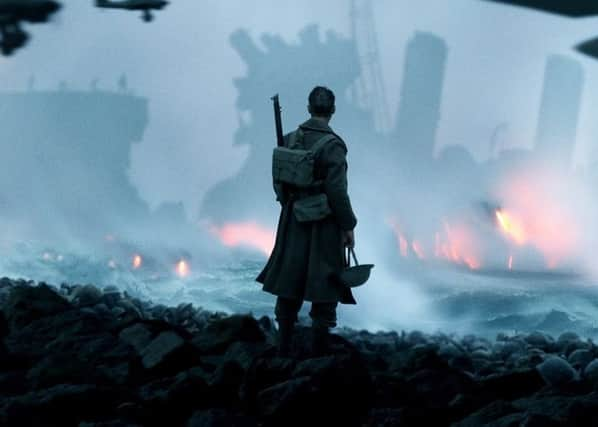Hugh Sebag-Montefiore: Dunkirk - inaccurate film has touches that reflect the truth


However when six British soldiers walk down the deserted but pristine Dunkirk street in the very first scene of Dunkirk, Christopher Nolan’s latest blockbuster, it is immediately clear that in this film no attempt is going to be made to stick to the facts.
Anyone who knows anything about the 26 May to 4 June 1940 evacuation of the British Expeditionary Force from France will tell you that just about every window pane in every street had been smashed by the time the evacuation was under way at the end of May 1940, and the streets were full of bombed and burned out houses.
Advertisement
Hide AdAdvertisement
Hide AdThe historical scene setting is no more accurate. Vice Admiral Bertram Ramsay is not permitted to stay in Dover from where he directed Operation Dynamo. Christopher Nolan has him speed over from England to the Dunkirk mole, the main jetty, so he can deliver his pessimistic message about the likely evacuation rate to Kenneth Branagh’s piermaster in person.
The dialogue between the two men is equally unauthentic. Ramsay’s forecast that only 45,000 men could be rescued was made at the beginning of the evacuation. Churchill’s decision to let one Frenchman be evacuated for every British soldier rescued was taken near towards the end. Yet in the film these topics are rolled into one conversation. Such liberties are symptomatic of this film’s reckless disregard for history.
After establishing this, it is no surprise to see all sorts of other anomalies. Women appear at Dunkirk on little ships as well as hospital ships, although I never saw any evidence they made such an appearance. The RAF patrol in three plane groups notwithstanding the real life decision to deploy in much larger formations, and the armada of little ships is similarly depleted. And the hero of the film reads out Churchill’s ‘We will fight them on the beaches’ speech the day before it was delivered!
And yet this film is full of touches which echo the true dramas I unearthed when writing my Dunkirk book. I almost wept when George, the teenager who has been mortally wounded on the little ship that is heading for Dunkirk spits out his last words, not because they are delivered particularly powerfully, but because they echo a poignant true life scene: after Harold Potter, an 18 year old sailor in the merchant navy, was blown to kingdom come off Dunkirk with all the other men serving on the cockle boat Renown by an exploding mine, his father revealed how much being part of the rescue meant to him.
Advertisement
Hide AdAdvertisement
Hide AdHarold believed he was a failure when he was at school, although this was partly because of recurrent illnesses. But shortly before he left, he told his father that one day he would do something to make the school proud of him.
When his parents received the letter telling him that Harold had ‘done well’, and had ‘died doing his duty helping to evacuate troops from the coast of Belgium’, they were comforted that he had done something which had he lived would have made him proud of himself.
I was equally mesmerised by the way Mark Rylance, the civilian in charge of the motor launch heading for Dunkirk, dealt with German plane that swooped down towards his defenceless little ship. In the best traditions of British servicemen with their backs to the wall who hold their fire until it can deliver the biggest dividend, he told his son to keep on steering the boat along its current course until the screaming German plane was almost upon them, only at the very last minute ordering the boy to wrench round the tiller, taking the boat out of harm’s way. That was all the more exciting because I knew it mirrored the action taken on Sundowner, one of the little ships whose exploits are recounted in the little ships file in London’s National Archives.
Likewise there was a ring of truth about the scuffle between the British and the French as British officials sought to exclude French soldiers from the mole, and about the threat by the character played by pop star Harry Styles to shoot a Frenchman who had been sheltering with the Brits on a stranded ship.
Advertisement
Hide AdAdvertisement
Hide AdDocuments I found in the French archives describe how there really were scuffles between allies on the beaches, and how one group of French soldiers were put up against a wall and shot because they were believed to be spies.
But perhaps the most telling scene in the film was when the rescued British soldiers following their return to England looked out of their train window to find a group of schoolboys playing games beside the railway track as if the war had never been started. This could not have been more realistic.
I remember reading an account by a young British lieutenant who had overcome almost insuperable odds to get back to Dunkirk and then Britain, which described his relief as he looked out of his train window and saw cricketers dressed in whites on their village greens and girls in summer shorts and blouses playing tennis ‘as if there was no war.’
Hugh Sebag-Montefiore is the author of Dunkirk: Fight To The Last Man.